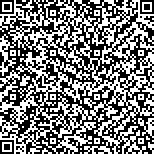| 本文已被:浏览 1203次 下载 864次 |

码上扫一扫! |
|
|
| 基于“四海理论”的腹部推拿治疗慢性下腰痛伴发抑郁状态的临床随机对照研究 |
|
苏志超1,2, 杜鑫3, 闫华琼4, 卢燚1,2, 赵娜1,2, 李华南1,2
|
|
1.天津中医药大学第一附属医院, 天津 300193;2.国家中医药管理局推拿手法生物效应三级实验室, 天津 300193;3.首都医科大学附属北京中医医院, 北京 100010;4.天津市天津医院, 天津 300211
|
|
| 摘要: |
| [目的] 比较腹部推拿和氟西汀治疗慢性下腰痛伴发抑郁状态的临床疗效及安全性。[方法] 将80例慢性下腰痛伴发抑郁状态患者随机分为治疗组和对照组,每组各40例,两组在常规治疗基础上,治疗组采用腹部推拿治疗,对照组采用口服氟西汀治疗,采用视觉模拟量表(VAS)评定两组患者疼痛程度,采用日本骨科学会下腰痛评分量表(JOA)评分评估两组患者运动功能与日常活动能力,采用Zung编制的抑郁自评量表(SDS)评价两组患者抑郁状态,并观察两组不良反应发生情况。[结果] 治疗14、28 d后及随访6个月时,两组患者的VAS、JOA评分均明显优于治疗前(P<0.01);治疗组的VAS、JOA评分明显优于对照组(P<0.01或P<0.05)。与治疗前比较,治疗14、28 d后及随访6个月时SDS评分均呈显著下降趋势(P<0.01),治疗14、28 d后治疗组与对照组SDS评分对比差异无统计学意义(P>0.05),而两组随访6个月时SDS评分,治疗组低于对照组(P<0.05);治疗组不良反应率为5.88%,显著低于对照组的36.4%(P<0.01)。[结论] 腹部推拿组比氟西汀组能更好缓解慢性下腰痛患者的疼痛感,提高患者运动功能与日常活动能力,提高其生活质量,且不良反应较少。而在改善患者抑郁状态上近期治疗效果上两种治疗手段效果相当,腹部推拿组的远期疗效更好,值得推广。 |
| 关键词: 慢性下腰痛 抑郁状态 腹部推拿 氟西汀 |
| DOI:10.11656/j.issn.1672-1519.2020.10.14 |
| 分类号:R244.1 |
| 基金项目:天津中医药大学第一附属医院学科发展基金(XKJJ201705);2019年度天津市中医药大学第一附属医院“拓新工程”基金科研课题(院201931)。 |
|
| Abdominal massage for the treatment of chronic low back pain with depression based on “four seas theory”: a randomized controlled trial |
|
SU Zhichao1,2, DU Xin3, YAN Huaqiong4, LU Yi1,2, ZHAO Na1,2, LI Huanan1,2
|
|
1.First Teaching Hospital of Tianjin University of Traditional Chinese Medicine, Tianjin 300193, China;2.National Laboratory of Tuina Biological Effects, State Administration of Traditional Chinese Medicin, Tianjin 300193, China;3.Beijing Hospital of Traditional Chinese Medicine, Capital Medical University, Beijing 100010, China;4.Tianjin Hospital, Tianjin 300211, China
|
| Abstract: |
| [Objective] To compare the clinical efficacy and safety of abdominal massage and fluoxetine in the treatment of chronic low back pain with depression.[Methods] Eighty patients with chronic low back pain and depression were randomly divided into a treatment group and a control group,40 cases in each group. The two groups were based on the basic treatment of western medicine. On the basis of conventional treatment,the treatment group was treated with abdominal massage and the control group was treated with oral fluoxetine. The visual analog scale (VAS) was used to assess the pain level of the two groups,the Japanese Orthopaedic Association low back pain rating scale (JOA) score was used to evaluate the motor function and daily activity of the two groups. The self-depression scale (SDS) was used to evaluate the depression status of the two groups and the adverse reactions of the two groups were observed.[Results] After 14 days,28 days,and 6 months of follow-up,the VAS and JOA scores of the two groups were significantly better than those before treatment (P<0.01). The VAS and JOA scores of the treatment group were significantly better than those of the control group (P<0.01 or P<0.05). Compared with before treatment,the SDS scores showed a significant downward trend after 14 days,28 days,and 6 months of follow-up (P<0.01). There was no significant difference in SDS scores between the treatment group and the control group after 14 days and 28 days of treatment (P>0.05),and the SDS scores of the two groups during the 6 months follow-up,the treatment group was lower than the control group (P<0.05);the adverse reaction rate in the treatment group was 5.88%,which was significantly lower than the control group's 36.4% (P<0.01).[Conclusion] Compared with the fluoxetine group,the abdominal massage group can better relieve the pain of patients with chronic low back pain,improve their motor function and daily activities,improve their quality of life,and have fewer adverse reactions. The short-term treatment effect on improving patients' depression status. The two treatments are equally effective,and the long-term effect of the abdominal massage group is better and worth promoting. |
| Key words: chronic low back pain depressive state abdominal massage fluoxetine |
